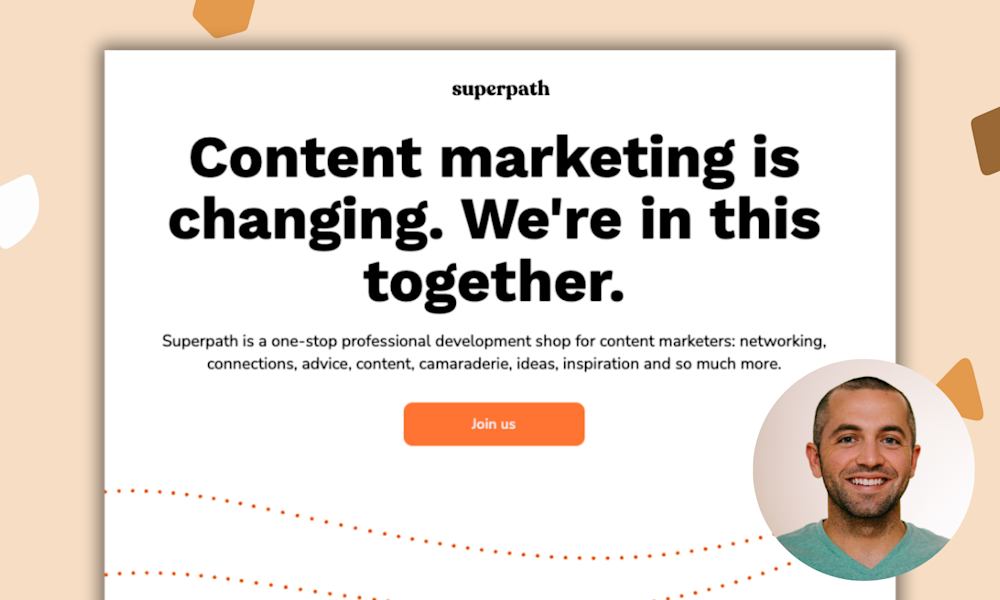Ashley and Jonathan Longnecker of Tiny Shiny Home are no strangers to adventure. After years of traveling full-time in a renovated Airstream with their four children, the family put down roots on a beautiful stretch of land in Arizona, where they're building a sustainable off-grid homestead.
They also run a successful YouTube channel with over 100,000 subscribers, a blog, and an online community where fans can follow along with their latest projects. On top of that, they sell digital products like boondocking courses, solar panel wiring diagrams, and Airstream renovation checklists.
But getting to this point wasn’t easy.
It took the Longneckers years to create the well-known brand they have today, and they faced challenges growing an audience and making products that resonated with their followers. They also learned that you might have to do something wild — and deliberate — to give your business the push it needs.
In the end, Jonathan and Ashley built an online business that allows them to work together as a family, connect with nature, and learn new things every day. Here's how they did it.
The journey to life off-grid
Before becoming Tiny Shiny Home, Jonathan and Ashley had an interest in entrepreneurship. They explored business ideas like designing t-shirts, refinishing furniture, and blogging, and they dreamed of showing their kids the world one day.
Then in 2015, the family of six decided to shake things up. They sold their house, moved into an RV, and hit the open road to travel full time. They documented their travels on their blog so they would have a journal to look back on.
While the family enjoyed visiting new places, they quickly realized they didn’t enjoy staying in campgrounds. They felt cramped against their neighbors and craved more space and tranquility.
"We fell in love with these beautiful nature areas that were quiet and didn’t have a lot of people around," Jonathan recalls. "That's how we got into boondocking, which is where you camp off-grid without any hookups. You're out in the middle of nowhere."
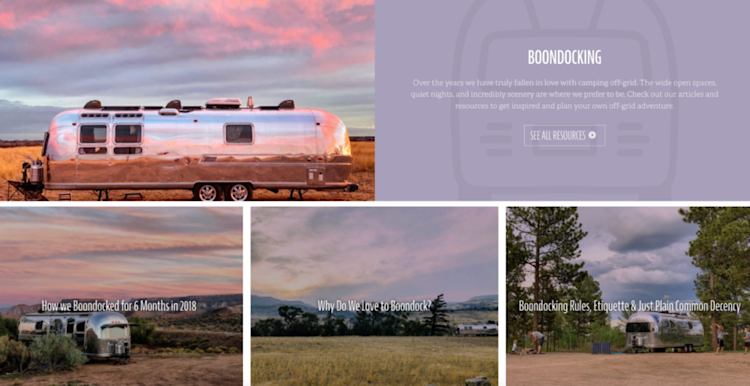
But boondocking in remote locations in a giant RV with noisy generators wasn't ideal, so they sold the RV and bought a 1972 Airstream which eventually became the namesake for their brand. Knowing they wanted to live off-grid, they gutted the whole Airstream and rebuilt it from scratch. As they went, they documented what they were doing on their blog and social media accounts.
“The Airstream had solar. Everything was very low power. It had internet and cell boosters. We put big tires on it so we could go places that weren’t flat roads. It was imagined from the ground up for boondocking and our family because there aren’t a lot of Airstreams made for six people.”
Once finished, their unique Airstream included a set of elaborate fold-down bunk beds and a standing desk since Jonathan was working remotely as a web developer.

With the right set of wheels, the family spent the next few years traveling everywhere under the sun, and they knew their days of traditional suburban life were over.
“It really ruined us,” Jonathan explains. “We couldn’t go back to a subdivision. We needed wide open spaces and beautiful views. And I think we fell in love with that idea of living more sustainably.”
Meanwhile, the Longnecker’s follower count grew, and fans expressed how much they loved seeing the family’s travels. News publications picked up their Airstream renovation story, and even though they weren’t making money just yet, they started to wonder if they were onto something special.
Creating the first online course
The more the family traveled off-grid, the more they wanted to share what they were learning. They decided to create an online course about boondocking.
“We spent an enormous amount of time writing this course and filming it. We were filming in multiple locations, like South Dakota and Yellowstone,” Jonathan states.
“We illustrated elements by hand and even wrote music for it. We went all-in on that course and spent way too much time on it.”
When the course was finished, they needed a place to house it. They chose Podia because they liked the simplicity and design. Being able to embed different elements into their courses and share checkout links on their own website was the cherry on top.
They also liked how they could use Podia for email marketing. They were building their email list by giving away free lead magnets, but their email provider charged higher rates as their list grew. Podia made it possible to keep everything in one place for a single flat price.
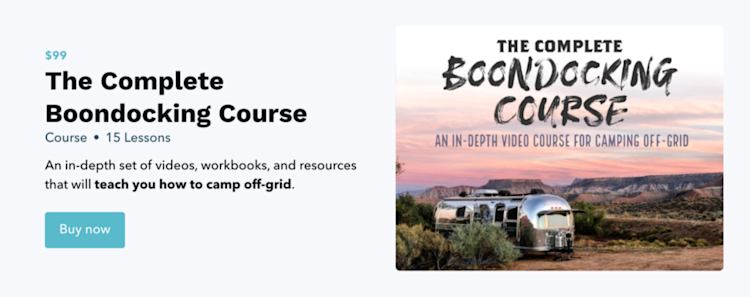
Course launch day arrived, but even though they had put so much care and value into their product, it wasn’t the smash hit they hoped it would be.
“We just didn’t have the audience to sell the course,” Jonathan elaborates. “It wasn’t because we weren’t doing good stuff. We didn’t have the audience, recognition, or awareness to move the needle on [course sales].”
The Longneckers also didn’t realize that their followers were more interested in a different topic: the Airstream.
“We spent so much energy creating the boondocking course and trying to sell it,” Jonathan reflects. “And all the while, I think that we totally missed the boat that the majority of our traffic to our site was to the Airstream renovation.”
It was time to pivot.
Finding the winning content and product formula
To figure out their next steps, the Longneckers hired a business coach. The coach encouraged them to focus on topics their audience was already seeking, using their website traffic as a guide.
He also suggested creating digital products to complement these topics that could be assembled in days or weeks, not months. So Jonathan and Ashley dove into their blog archives to see what was getting the most views. One of their most popular articles was a full cost breakdown of the renovation.
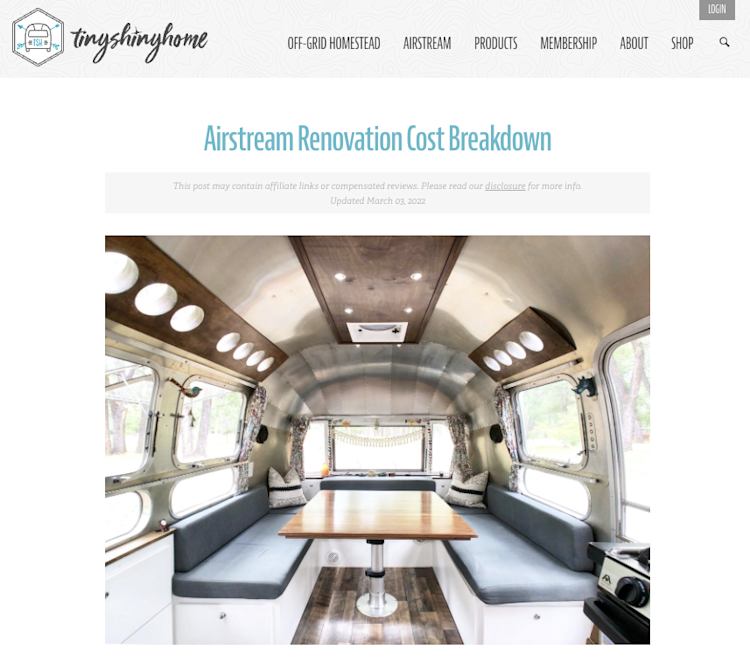
“We realized that post was the most visited page on our website, so we tried to figure out how we could turn that article into a paid resource without spending six months on it.”
They made a cost calculator download that included everything they bought during the renovation. People who landed on the article could purchase the cost calculator and use it to budget for their own Airstream renovation.
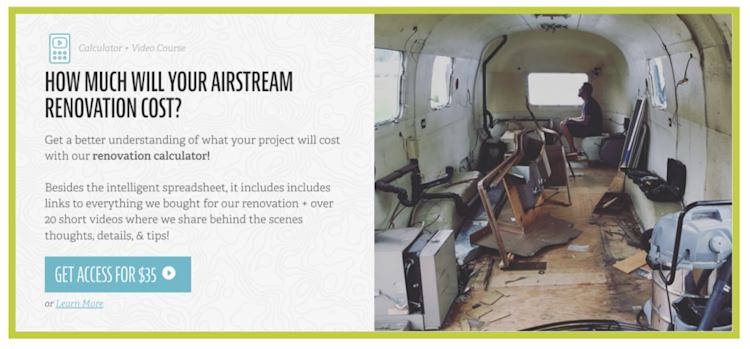
This was the winning formula for the Longneckers.
Now, whenever the family creates a big piece of free content, they also create a corresponding paid product to release simultaneously. This allows interested followers to deepen their knowledge and provides an additional income stream for the Longneckers.
While all this was happening, the family decided it was time to put down roots. They found a piece of land in Arizona where they could construct their dream off-grid desert homestead with plenty of space to build, create, and play.
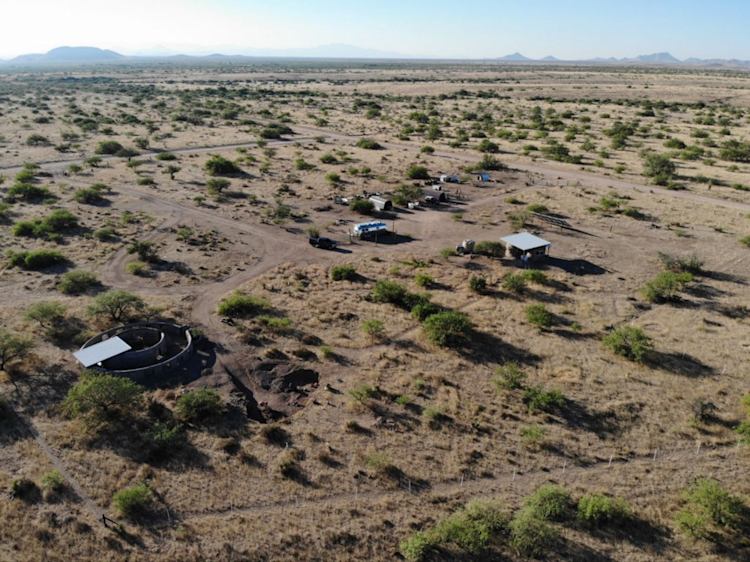
On the homestead, the family spent their days building earthbag dwellings, installing solar panels, and caring for their animals. They had a fresh piece of land, endless ideas, and a growing to-do list.
A new chapter was starting for the family, and along with it, a new phase in their business.
Growing an audience on YouTube
Today, Tiny Shiny Home has over 100K YouTube subscribers, and their videos get thousands–sometimes millions–of views.
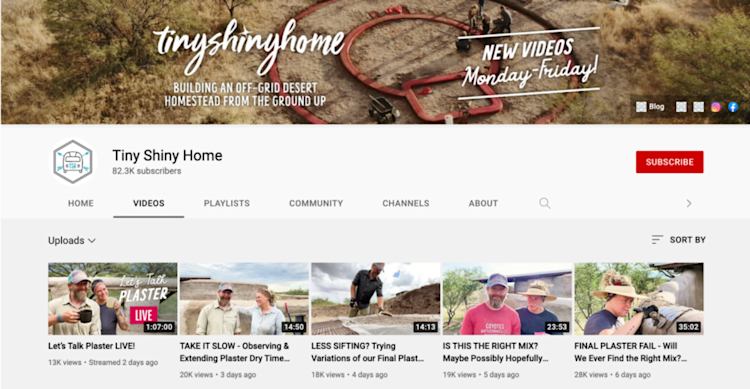
Having extra eyes makes their digital products more profitable, and YouTube drives a significant chunk of their website traffic.
But how did they grow their YouTube channel in the first place?
The family dabbled in video while traveling, and they enjoyed filming footage for their boondocking course, but they didn’t get serious about YouTube until they settled on their homestead.
“Based on our research, there were quite a few homesteading channels that seemed to be doing really well,” Jonathan says. “With the homestead, we’re in one place and we have an endless supply of projects to work on, so it makes sense for us to invest in YouTube content.”
During their first year on their homestead, they made one video per week but didn’t see any real growth.
“We were making pennies from YouTube. When we got to the end of the year, we looked at how much time we were putting into it, and we had to make a decision.”
They’d had a website and family brand for eight years and were making some revenue, but not enough to be a full-time income. Jonathan was still working with web development clients, but the family longed for more time to work on their homestead and Tiny Shiny Home.
“We knew how to make content. We knew how to make blog posts and videos and take photographs,” Jonathan remarks. “But there was something that we were missing that was keeping us from growing. It just seemed like we talked about this dream every year, and there was hardly any movement.”
Driven by their desire to develop their homestead and create content for Tiny Shiny Home, they were ready to go big.
“2021 was the year we decided that if we were going to make this work, we need to do something crazy.”
The family was working on a solar shed building, so they committed to making a YouTube video every day for thirty days to show their progress.
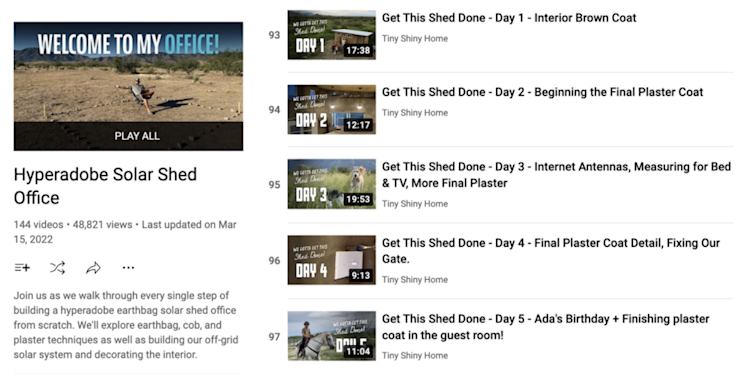
“The first thirty days we did it, we saw a lot of engagement,” Jonathan explains. “People said, ‘Wow, cool, you’re doing this each day. I want to see how far you get.’”
Completing construction projects while continually filming, editing, and releasing videos was a lot of work, but consistent posting resulted in more subscribers, likes, and comments. Their community of fans grew.
“We became part of their schedule every day. They could wake up, have their coffee, and watch Tiny Shiny Home.”
After seeing their channel grow during the first thirty days, they made daily videos for another thirty days, then another forty-five. During that time, something clicked.
“We got the YouTube algorithm going in our favor because we were posting so much, and that moved us in the right direction.”
But there was one more step that took things to the next level. The Longneckers noticed that other homesteading YouTube channels got the most views on longer, full-build videos. Fans enjoyed watching a project from start to finish, so they gave it a try.
They took hundreds of videos they’d filmed while building the solar shed and made a two-hour movie version of the full project. Making the movie took an entire month, but it paid off.
“That movie blew up. It’s got 2.9 million views. That super grew our subscriber numbers and also created real revenue,” Jonathan says.

It was a game-changing win for the family, and since then, they’ve been refining their content creation cadence for long-term sustainability.
Now, 80% of their videos are project updates and content about life on the homestead. Since these videos are released daily, they’re less edited and feel more like an update from a friend.
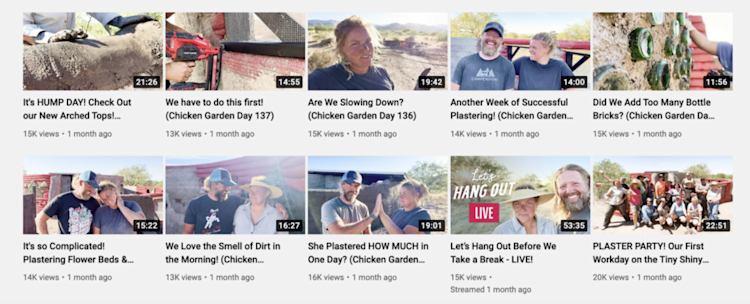
20% of their videos are longer SEO-optimized full-build videos packed with educational content. These videos take more time but bring in the most revenue and are instrumental in introducing new viewers to the channel.
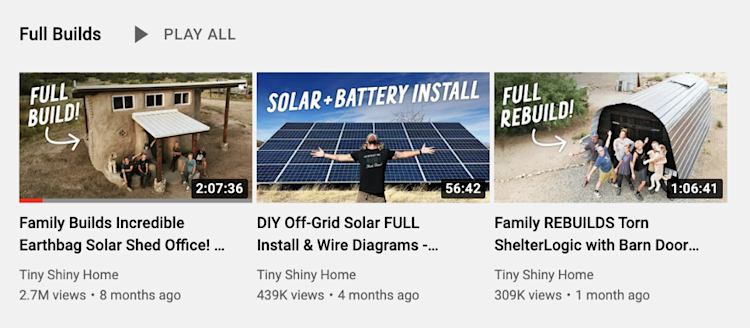
“Now that we have several of those bigger videos, each time we post a new one, the views on all our videos go up because YouTube is recommending everything more,” Jonathan observes.
“It’s like that saying, ‘The rising tide lifts all boats.’ And the more boats we have, the higher the tide seems to go.”
Enabling fan support through community memberships
In addition to digital products and YouTube ad revenue, Tiny Shiny Home earns money through a Patreon-style membership community hosted on Podia.
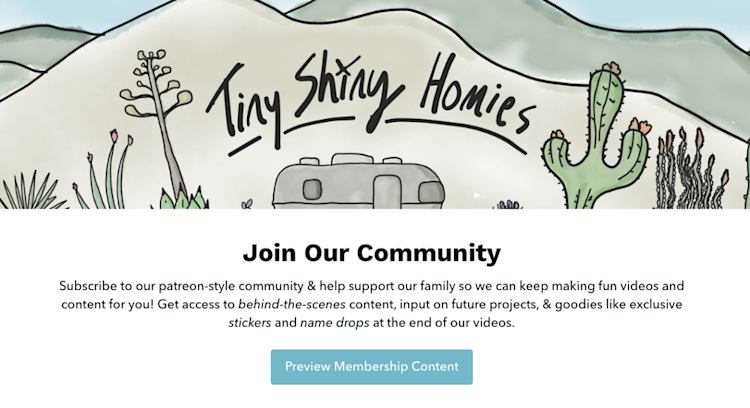
At first, the Longneckers resisted the idea, even though their followers were requesting a way to support them.
“Neither of us are salespeople. We hate self-promotion. I think we resisted it for a long time because we didn’t like asking people for stuff,” Jonathan says.
“We were already spending so much time making content. We were scared that if we launched a community, we wouldn’t do it right, no one would sign up, or we’d over-commit and not be able to deliver.”
But their audience kept asking, so with the help of their business coach, they designed a simple support community that wouldn’t create an unsustainable workload.
People could pay between $3 and $50 per month to get a few basic rewards, but the community was mainly a way for followers to show support.
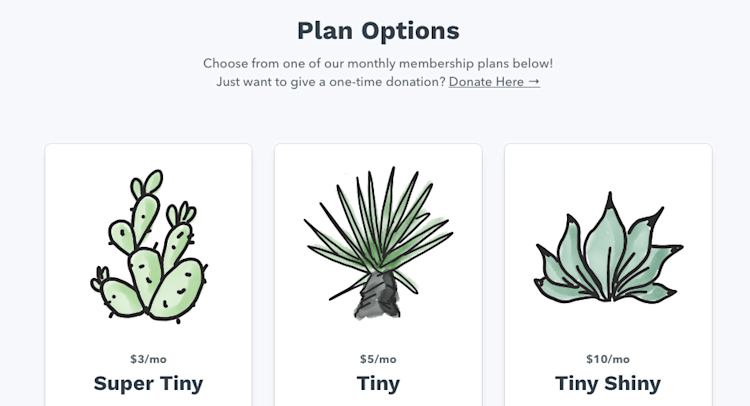
Podia’s community feature is included on all plans, so the Longneckers were able to host their community in the same place they sell digital products and courses.
(Platforms like Patreon charge a flat rate for transaction fees, so the more your community grows, the more you pay each month.)
When the Longneckers launched their “Tiny Shiny Homies” community, many fans signed up right away, and the community has continued to grow.
“While the community has a few perks, it’s really just a way for people to support our family,” Jonathan shares. “The majority of our effort is going to YouTube, which is public. But people understand how much work it is and want to help support it.”
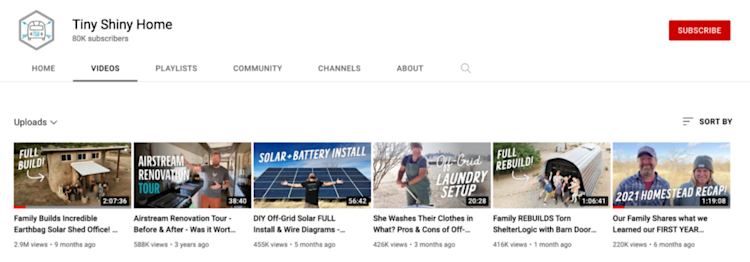
Jonathan and Ashley didn’t need to make an elaborate sales pitch for members to join their community. Because they had built a strong foundation through years of consistent posting and high-quality content, fans sought it out themselves.
“We’re doing this work every day. We’re filming, editing, and publishing. We’ve become part of their day, and [our fans] want to see that continue.”
Advice for fellow creators
With nearly a decade of experience as creative entrepreneurs, the Longneckers know a thing or two about running an online business. Their advice for fellow creators? Trust that the process takes time, diversify your income streams and platforms, and always be good to your audience.
Success takes time
It’s okay if it takes you a while to reach your goals as a creator.
“We spent years learning how to take photographs, film and edit videos, write blog articles, and organize information to make it digestible. There was a lot of trying stuff and a lot of failing,” Jonathan laughs.
“It was eight years of work before we hit that turning point… but we kept learning things and applying them to the next phase until we got where we wanted to be.”
Remember the Longnecker’s first course about boondocking? Even though it wasn’t a huge seller when it launched, they were able to use that course to secure a big brand partnership years later.

Bottom line: learn as much as possible, create the best work you can, and enjoy the journey along the way. You never know where you’ll end up.
Diversify your income streams and don’t depend on a single platform
It’s essential to vary your income streams as a creator. You should also diversify the platforms you use to reach your audience, especially if you depend on those platforms for revenue.
Social media platforms can change the rules in a heartbeat. They get the final say over what you can post and who sees it.
“Don’t put all your eggs in one basket,” Jonathan recommends. “That’s why we don’t just make videos but also products that go along with them, the community, and other sources of revenue that we own.”
“Your website should be the hub, and everything else in your business should be the spokes. You could make a whole business off of one spoke, but you never know what’s going to happen.”
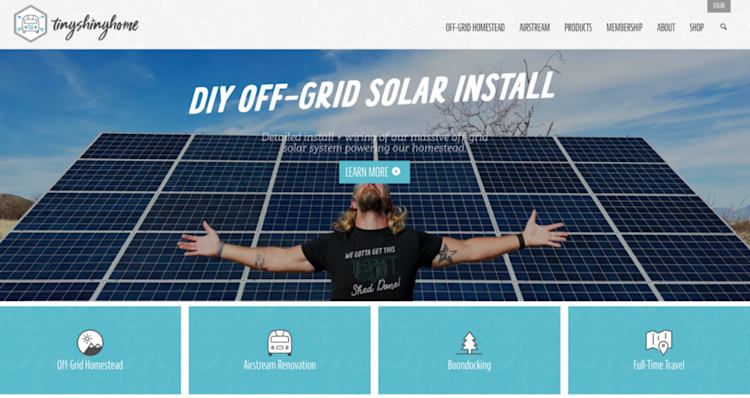
More spokes means more security, now and into the future. And if you need a place to build your hub, websites are included on Podia’s free 30-day trial.
Be good to your audience
Finally, leading with goodwill and authenticity helped Jonathan and Ashley build the brand they have today.
For years, they shared their knowledge and created interesting content for their audience, even if they didn’t directly make money. Their giving spirit and positive brand voice helped them build lasting bonds with their followers.
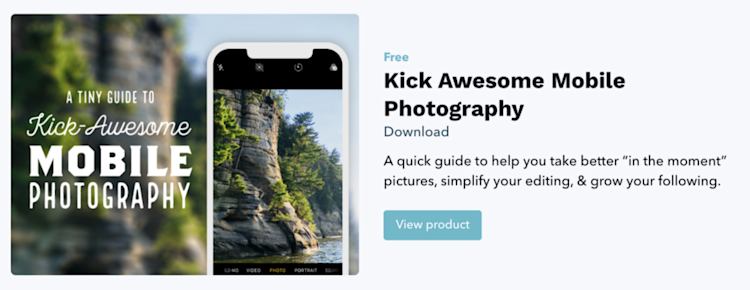
“Goodwill is something that I keep coming back to,” Jonathan notes. “I see so many brands waste it. There’s a lot to be said for public opinion, and we hope people get a good feeling when they think of us.”
Jonathan and Ashley point out that you don’t have to reinvent the wheel to build goodwill with your audience. Be your authentic self, create the best content possible for your followers, lead with openness and honesty, and have fun along the way. People will notice.
Keeping up with the Longnecker family
Today, the Longneckers are working on projects around their property and sharing their progress on their YouTube channel, website, and social media accounts.
They have a collection of digital products and online courses, as well as a community where members can support their work.
By continually learning, listening to their audience, and diversifying their offerings, Jonathan and Ashley have built a business that allows them to spend time doing what they love most–building their incredible desert homestead together as a family.
We can’t wait to see what they do next.
